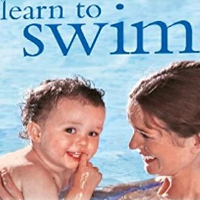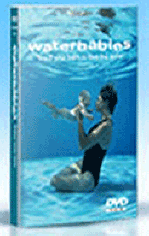
Courtesy of Epilepsy Action
Swimming is an excellent way to keep in shape yet many people are frightened in case they or their children have a seizure in the water. This leaflet aims to show that with a few sensible precautions people with epilepsy can enjoy all the benefits of swimming quite safely.
Swimming is often a very sociable activity. Children for example may feel left out if they are barred from swimming just because of epilepsy while all their classmates are playing or learning to swim in the pool. Such segregation increases the feeling of being ‘different’ or an outsider. Other children may then react unfavourably and the child with epilepsy can feel rejected.
Everyone should learn how to swim especially children with epilepsy – it helps with self-confidence with social skills and relationships and most importantly it’s fun!
Often those of us with epilepsy may want to swim but are prevented by family friends teachers or swimming pool staff. Other people sometimes imagine the worst and decide on our behalf that it is not worth the risk. If so this page should help calm those fears but for extra reassurance they can telephone the Freephone Helpline on 0808 800 5050.
Research shows that few seizures actually occur in the water. This may be because when a person is enjoyably occupied they are less likely to have a seizure. All sports and pastimes including swimming can help to improve seizure patterns in some people. However it is impossible to be certain that a seizure will not occur so it is essential to follow a few simple safety measures.
-
Never swim alone and do not take risks.
-
Make sure there is a qualified life-saver present (perhaps a friend or relative could learn). If there isn’t one swim no deeper than your supervisor’s or companion’s shoulder height.
-
Always tell a person in charge if you have epilepsy.
-
Check that the person in charge or your companion knows what to do if you have a seizure.
-
If you can practice with your companion what to do in the event of a seizure – this will boost your confidence and theirs.
-
Swimming in the sea lakes or very cold water is dangerous – be sensible.
-
If unwell don’t swim.
-
Avoid overcrowded situations.
Those of us with epilepsy can find it embarrassing to be ‘supervised’ especially if we are the only person being watched over. Swimming in pairs is an American idea known as the Buddy System and it is becoming popular in the UK. It is especially useful in swimming classes because it means everyone has a partner taking attention away from the person with epilepsy. It also enables life-saving to be taught in pairs and teaches us all to be aware of other people’s safety.
Once or twice during the session someone blows a whistle and you must be able to touch your partner immediately. If you can’t it means you are too far away from each other and you have ‘lost’. An agreed forfeit may then be paid. If this partnering method cannot be used it may be better for the ‘supervisor’ to stay out of the water in case prompt action is needed. Whichever method is used supervision needs to be discreet.
How to deal with a seizure in the water
Not all people with epilepsy have convulsions. Some may simply go blank for a few seconds (absences) others may make repeated aimless movements for a minute or two (partial seizures). These last two seizure types do not usually require emergency action but care needs to be taken that the person does not sink. When they recover gently ask if they would like to get out of the water. They may not realise what happened or they may feel groggy.
The basic guidelines are:
-
Do not be afraid the seizure will probably not last long.
-
From behind hold the swimmer’s head above water.
-
If possible tow the person to shallow water.
-
Do not restrict movements or place anything in the mouth.
-
Once abnormal movement has stopped move the swimmer to dry land.
-
If water has been swallowed take the usual resuscitation measures.
-
Place the swimmer on his or her side to recover.
-
Only call an ambulance if the person goes from one seizure to another without regaining consciousness or if the seizure lasts longer than normal or if there is injury or a lot of water has been swallowed.
-
If possible recovery should be in a private place.
-
Stay with the person until they feel better.
Should I ask my doctor before going swimming?
It is a good idea to speak to your doctor first particularly if the epilepsy is largely uncontrolled. Both of you need to take into account the type severity and frequency of the seizures known triggers such as noise stress excitement etc. whether there is any warning before a seizure and what supervision is available.
However if you really want to swim find a safe and suitable way to do it using all the recommendations listed here. Those of us with epilepsy should not allow it to ruin our quality of life and being a non-swimmer is far more dangerous than learning to swim in a safe and supervised environment.
Further advice on epilepsy and swimming is available from Epilepsy Action by using the Email Helpline or if you live in the UK by phoning the Freephone Helpline on 0808 800 5050.
Diving Lessons Learn to Swim Swimming Lessons Teach Baby to Swim




 Water makes us very afraid when we know how easily a baby could drown. Today we are going to tell you how to teach your baby to swim from when he is very small. They will start to have confidence in the water and you will feel much more secure and calm.
Water makes us very afraid when we know how easily a baby could drown. Today we are going to tell you how to teach your baby to swim from when he is very small. They will start to have confidence in the water and you will feel much more secure and calm. Forget the floats. If you bought them to make them feel safer in the water, the experts do not recommend them. Not only can it give them a false sense of security, but they will also adopt an incorrect way of staying afloat, as it makes them take a vertical position in the water when they need to be able to stand horizontally. If you are already used to swimming with them, it will be difficult to take them off. If you want your child to learn to swim more easily, try these water games:
Forget the floats. If you bought them to make them feel safer in the water, the experts do not recommend them. Not only can it give them a false sense of security, but they will also adopt an incorrect way of staying afloat, as it makes them take a vertical position in the water when they need to be able to stand horizontally. If you are already used to swimming with them, it will be difficult to take them off. If you want your child to learn to swim more easily, try these water games:

